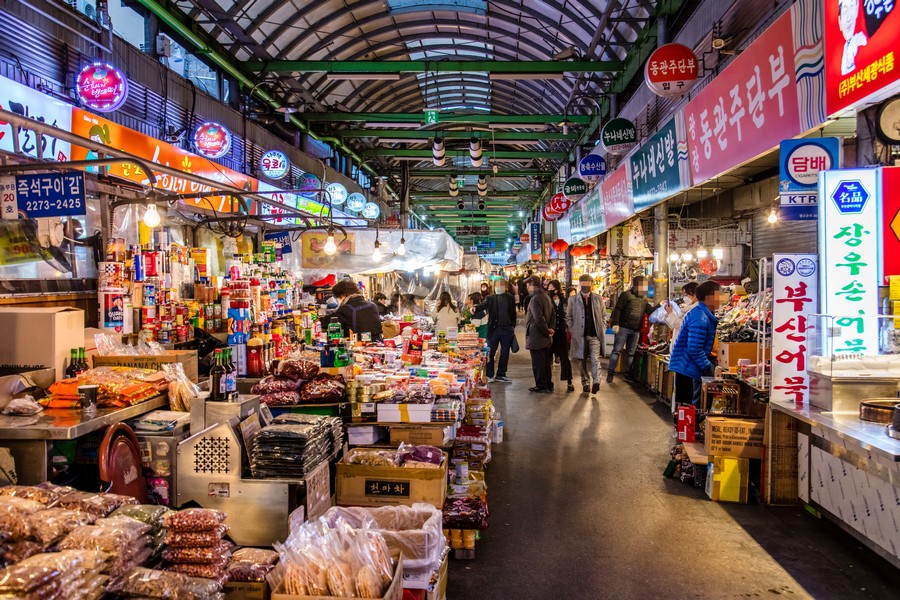
Located in the heart of Seoul, at 5-ga Jongno, in Yeji-dong, Gwangjang Market is the largest traditional market in the city and holds the distinction of being the first conventional trading market in South Korea. Founded in 1904, Gwangjang Market is one of the oldest companies in Korea and operates daily from 9:00 AM to 6:00 PM.
Gwangjang Market’s History and Name Origin
The name “Gwangjang” originates from the market’s location between the Gwangyo and Jangyo bridges along Cheonggyecheon, a significant waterway in Seoul. The name was chosen as a tribute to its proximity to these bridges. Interestingly, when the market was first established in 1905, it was originally named “Dongdaemun Market.”

Accessibility and Modern Facilities
Gwangjang Market is conveniently located just steps from Exit 8 of Jongno 5-ga Station on Seoul’s Line 1, making it easily accessible. The market has also undergone modernization with the addition of arcades and upgraded facilities, offering better mobility compared to other traditional markets.
Upon entering the market, you will find shops selling textiles, pottery, and furniture. As you head deeper into the market, you will encounter the famous “Food Alley,” renowned for its delicious street food. Some of the must-try dishes include bindaetteok (mung bean pancakes), jeon (Korean pancakes), yukhoe (raw beef), and daegu-tang (cod soup). Among these, bindaetteok is especially popular and has been frequently featured in the media for its unbeatable value. As of 2019, you could enjoy two pieces of bindaetteok and one piece of “wanja” (fried meatballs) for just 10,000 KRW, making it an excellent choice for a filling meal.

A Bustling Hotspot for Tourists and Locals Alike Nearby Gwangjang Market
Gwangjang Market is a lively hub, attracting both locals and tourists throughout the week, particularly on weekends when the crowds can become overwhelming. Even on weekdays, it’s common to see long lines at popular food stalls. The market is so crowded on holidays that it’s sometimes impossible to move through the aisles due to the sheer number of people. The popularity of bindaetteok means that even on rainy days, food stalls along the alley experience increased foot traffic, which is quite rare in other markets. During peak times, parking can be challenging as the area around Cheonggyecheon becomes congested.
Other Shopping Areas in the Market
Beyond the food alley, Gwangjang Market also features shops selling hanbok (traditional Korean clothing), bedding, textiles, and second-hand clothing. While the market is bustling during the day, it becomes much quieter in the evening as most of these shops close early. The second-hand clothing section, once a favorite of hipsters looking for unique items at affordable prices, has seen some negative changes in recent years, with counterfeit clothing now being sold by aggressive vendors.

Famous Among Foreign Visitors
Gwangjang Market is especially popular among foreign tourists. Celebrities such as Sam Smith, Jessica Alba, and Brie Larson have all visited the market during their trips to Seoul. Its reputation as a must-visit destination has made it a favorite spot for international travelers seeking to experience Korea’s vibrant market culture and traditional cuisine.

Gwangjang Market Nearby Attractions
Gwangjang Market is located near Bangsan Market, another popular destination for those looking to buy baking ingredients, perfumes, and diffusers. Together, these two markets form an essential part of a visit to this area, providing a comprehensive experience of traditional Korean commerce and culture.
